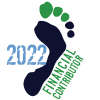On The Measurement of Running Style 1:
Risks and Benefits in Transitioning To Barefoot/Minimal Footwear Running
All, (From Martin Daumer, PhD)
This has taken quite some time: The paper based on the study we had done with your (BRS) support has finally been published (paper attached)!
Please feel free to distribute widely - we would really like to thank all the runners who have contributed with their experience to help other runners to avoid injuries.
Best regards,
Martin
Jacobs Journal of Sports Medicine
On The Measurement of Running Style 1: Risks and Benefits in Transitioning To Barefoot/Minimal Footwear Running (www.thebarefootrunners.org/misc/J_J_Sport_Med_2_3_014.pdf)
Methods - A survey with the social network of the “barefoot runners society.” An online questionnaire was set up using Google forms (fig. 1, see Pages 6&7) and advertised by the “barefoot runners society” website (http://thebarefootrunners.org/threa...d-vs-minimal-footwear-barefoot-runners.12871/ twice (see fig. 2)
with an automatic post on Facebook and Twitter and by the online-newsletter and Facebook of the “freeheel runningpad” ( https://www.facebook.com/RunningPad).
Prior: There is an ongoing debate about the benefits and risks of running in minimal footwear and barefoot instead of running in "normal" running shoes. Martin Daumer, inventor of FreeHeel Running Pads, and a team of students from TUM Munich (from the lecture "clinical applications of computational medicine" headed by the inventor of the "FreeHeel Running Pads" Martin Daumer--http://www.rcs.ei.tum.de/fileadmin/tueircs/www/clinical-applications-daumer/Flyer_CA12.pdf) plan to collect information about the association between running injuries and footwear. You are eligible to go through the questionnaire if you are used to running with traditional running shoes some time ago but now, after a certain transition phase, you are running mostly either in minimal footwear or barefoot. We will not collect any personal information about you. Results of the survey and comments will be published.







